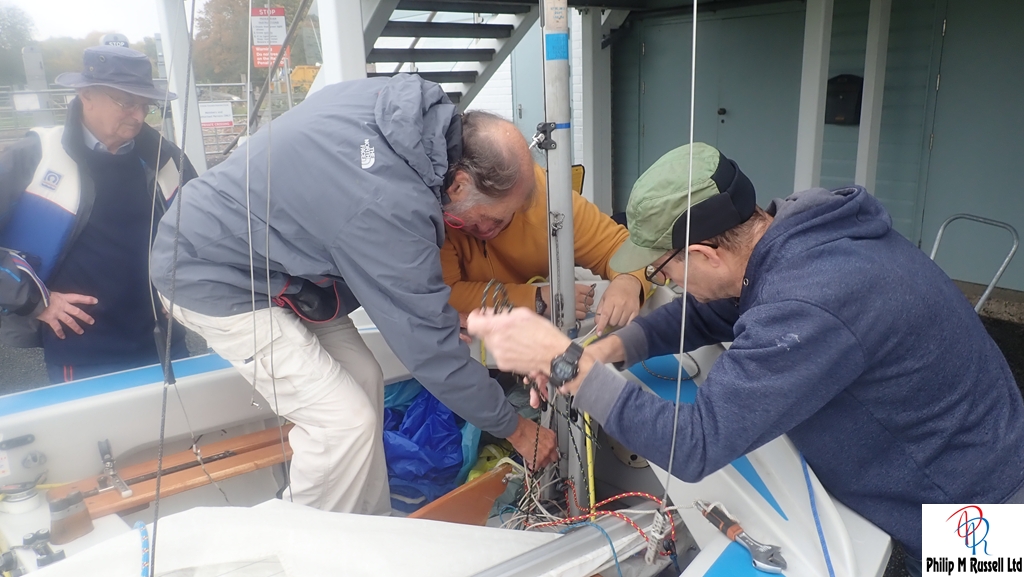admin Date , October 15, 2025 Sailing Previous Blog Third Last Comments (0)
It all started with a rope.
Specifically, the jib sheet, which had mysteriously worked its way out of the mast. No big deal, you might think — just thread it back through, right?
Ah. If only.
There was no mousing line (the thin line you leave behind for just such emergencies). And so began an epic, many-handed saga that proved, once and for all, that boat maintenance is a team sport… or a spectator event, depending on where you're standing.
The plan: wheel the boat, on its trailer, over to the clubhouse balcony. Position the mast next to the balcony and drop a line from the top.
Much easier than putting the boat in the water and heeling it over.
Four of us pushed, heaved, and aligned the boat like it was the final move in a sailing-themed game of Tetris, towards the balcony. The mast was considerably higher than the balcony, so out came the tall step ladder.
Enter the Commodore, who, with great ceremony, climbed the ladder to feed the new rope down. But alas, it snagged — probably on the knot near the spreaders.
Progress: none. Rope: stuck. Ladder: still tall.
More reinforcements arrived.
“Take the mast down, work at ground level!” someone declared. And so we did. Tools appeared. Spanners were brandished. A plastic block (through which all ropes mysteriously fed) had to be removed.
Someone tried to fish a stiff wire up the mast, hook it from above, then attach the rope.
It sounded plausible. It wasn’t.
Enter Martin, bearing a well-loved toolkit and a string with a lead weight — our DIY mousing line!
Unfortunately, it was tangled. Very tangled.
While Martin was unravelling, others reattempted the wire trick. Still didn’t work.
Someone had a genius idea: raise the mast again, this time while standing on a chair. The mast was lower now (still on the ground), so this was technically progress.
With delicate precision and a lot of breath-holding, the mousing line went in at the top… and appeared at the bottom!
The jib rope was attached and pulled through.
Victory!
We’d done it. After only a dozen sailors, several spanners, a step ladder, a chair, a lead weight, and a deeply frayed sense of dignity.
Reassembling the mast turned out to be… fiddly. Several other ropes had slipped out of their pulleys and guides in the panic. The mast went up, then down, then half-up, then sideways.At this point, I wisely left them to it and headed out with Ray in the safety boat, offering the occasional sympathetic wave as we cruised past the mast-wrestling crew.
As we tied up the safety boat at the end of the session, Ray hopped off to secure the bow line. Somehow, his foot found the one place it shouldn’t — the gap beside the pontoon.
Time slowed.
There was no splashy drama, just a smooth, controlled bottom-first descent into the Thames.
Only his pride was injured. (And perhaps his phone.)
Always leave a mousing line.
Twelve sailors can, eventually, thread one rope.
Even seasoned safety boat drivers are no match for wet pontoons.
And most importantly: never underestimate how long a “quick fix” on a dinghy will actually take.
